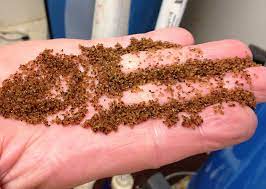
Some assembly line built water softeners can spill resin beads. Discovering resin beads from a water softener in your plumbing system can be a frustrating experience. These beads can enter the plumbing if the membrane that holds them in place within the water softener tank breaks, allowing them to travel freely throughout your pipes. Recognizing signs such as low water pressure, grit in shower heads and faucet screens, or even resin beads coming out of your faucet indicates a possible membrane breakage.
To address this problem, follow these steps to flush out the resin beads from your plumbing system:
- Close the water softener valves and open the bypass valve.
- Drain and flush your water heater.
- Remove all screens from your faucets.
- Open all cold water valves in your home.
- Flush and clean the water supply from the washer.
- Run all water-utilizing appliances, including dishwasher, washing machines, bathroom showers, sinks, and kitchen sinks.
- Monitor if resin continues to flow out with the water.
- If appliances become clogged or start to overflow, turn them off, detach their water hoses, and check for clogs. Flush the hoses to clear any beads and remove clogs from the connections.
Once clear water flows from all outlets, you can assume that you have successfully flushed out the resin beads from your pipes. However, it’s essential to address the underlying issue of the malfunctioning water softener. Refrain from turning off the bypass mode, as the broken membrane may still allow resins to enter your plumbing system. To prevent a recurring problem, focus on repairing or fixing your water softener effectively.